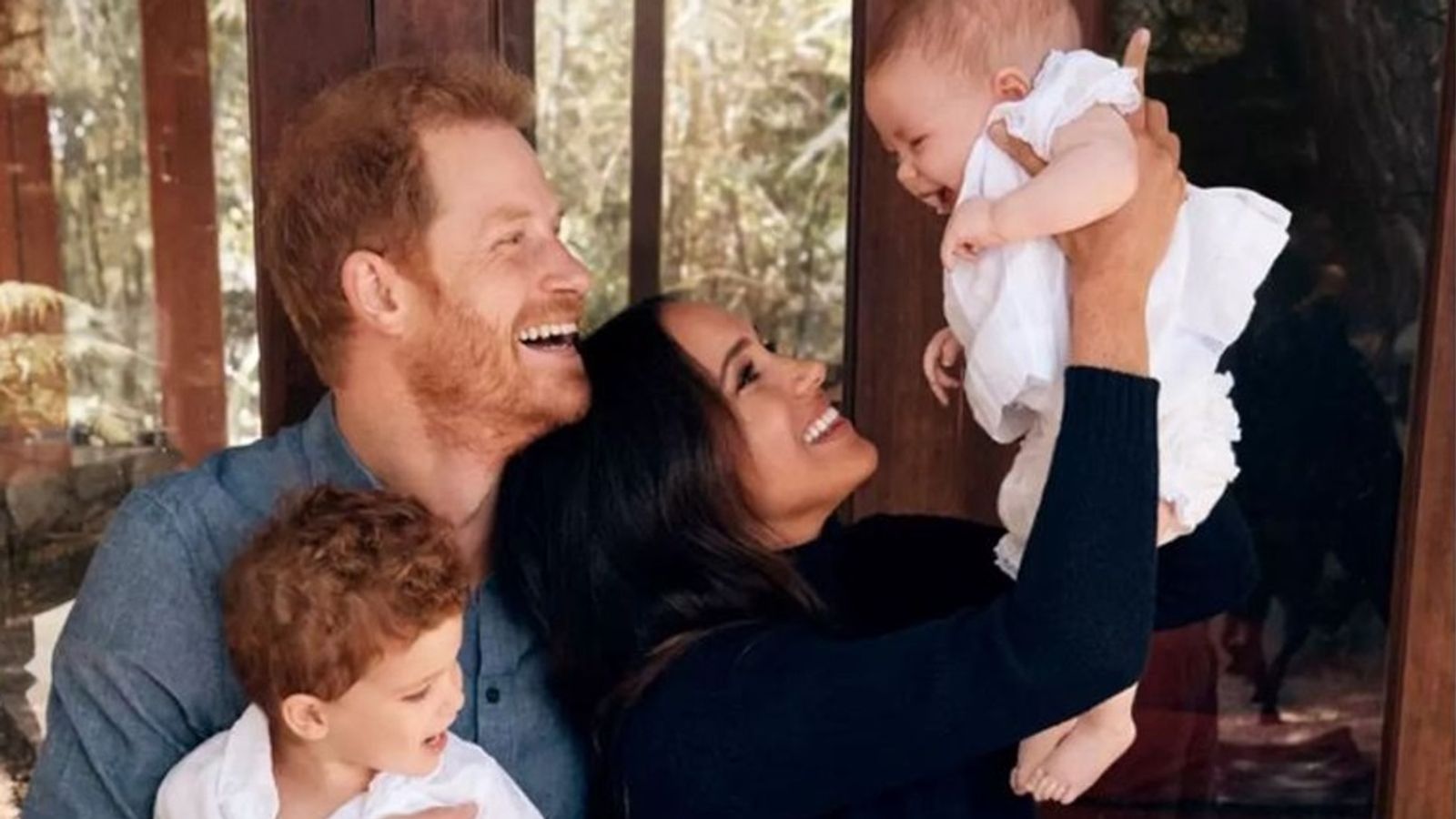The Duke and Duchess of Sussex have publicly used the titles prince and princess for their children Archie and Lilibet for the first time.
They used the title princess for their daughter, known as Lili for short, when she was christened in Los Angeles on Friday.
It was the first time Lilibet has been publicly referred to as a princess.
Why did Archie and Lilibet not previously have their royal titles?
Technically Harry and Meghan’s children became a prince and princess when the King acceded to the throne, but they have remained “master” and “miss” on the Buckingham Palace website for the last six months.
The palace has confirmed the site’s line of succession list would now be updated to reflect the change, after a spokesperson for the Sussexes publicly referred to Lilibet as a princess when announcing news of her christening.
Title rules set out by King George V in 1917 gave the children and grandchildren of a sovereign the automatic right to the HRH, prince and princess titles.
When Archie was born, he was the great-grandchild of a sovereign rather than a grandchild, so was not given the title.
However, when the Queen died and her son King Charles acceded to the throne, it meant Archie and Lilibet were entitled to be a prince and princess.
They are also entitled to use the HRH style – although Harry and Meghan retain their HRH styles, they no longer use them after leaving the working monarchy.
Read more:
Princess Lilibet Diana christened in LA
Charles ‘very emotional’ at first meeting with Lilibet
How will the titles be used?
It is understood the titles will be used in formal settings but not in everyday conversational use.
As such, the announcement of Lillibet’s baptism in California was the first opportunity to use her title since the death of the Queen.
Harry and Meghan are keen not to deny their children their birthright, but wish to allow them the chance to decide for themselves when they are older whether to drop or keep using the royal titles.
Meghan claimed Archie was not given title because of his race
In an interview with Oprah Winfrey in 2021, Meghan complained that Archie was not automatically given the title of prince.
“They didn’t want him to be a prince or princess, not knowing what the gender would be, which would be different from protocol, and [said] that he wasn’t going to receive security,” Meghan said.
Asked if she was bothered her son was not going to be given the title, she said: “All the grandeur surrounding this stuff is an attachment I don’t personally have. I have been a waitress, an actress, a princess, a duchess, and I’ve always just been Meghan.
“The most important title I will ever have is Mom but the idea of our son not being safe and also the idea of the first member of colour in this family not being titled in the same way that other grandchildren would be…”
She said the convention of whether her children would be princes or princesses was changed while she was pregnant: “It’s not their right to take it away… While I was pregnant they said they want to change the convention for Archie. Well, why?”
However, when he was born seventh in line to the throne in May 2019, Archie was too far down the line of succession – though he was a great-grandchild of the monarch, he was not a first-born son of a future king, so was not automatically a prince.
Could King Charles remove Archie and Lilibet’s royal titles?
It was previously reported in 2021 that Charles intended, when he became monarch, to prevent Archie from becoming a prince in a bid to limit the number of key royals.
To do so he would have to issue a Letters Patent amending Archie’s right to be a prince and Lilibet’s right to be a princess.
It is understood the King was aware beforehand that the Sussexes intended to refer to their daughter as Princess Lili.







